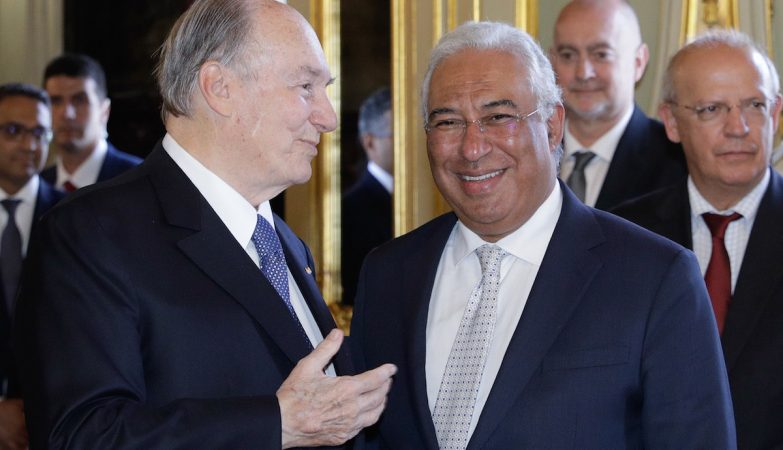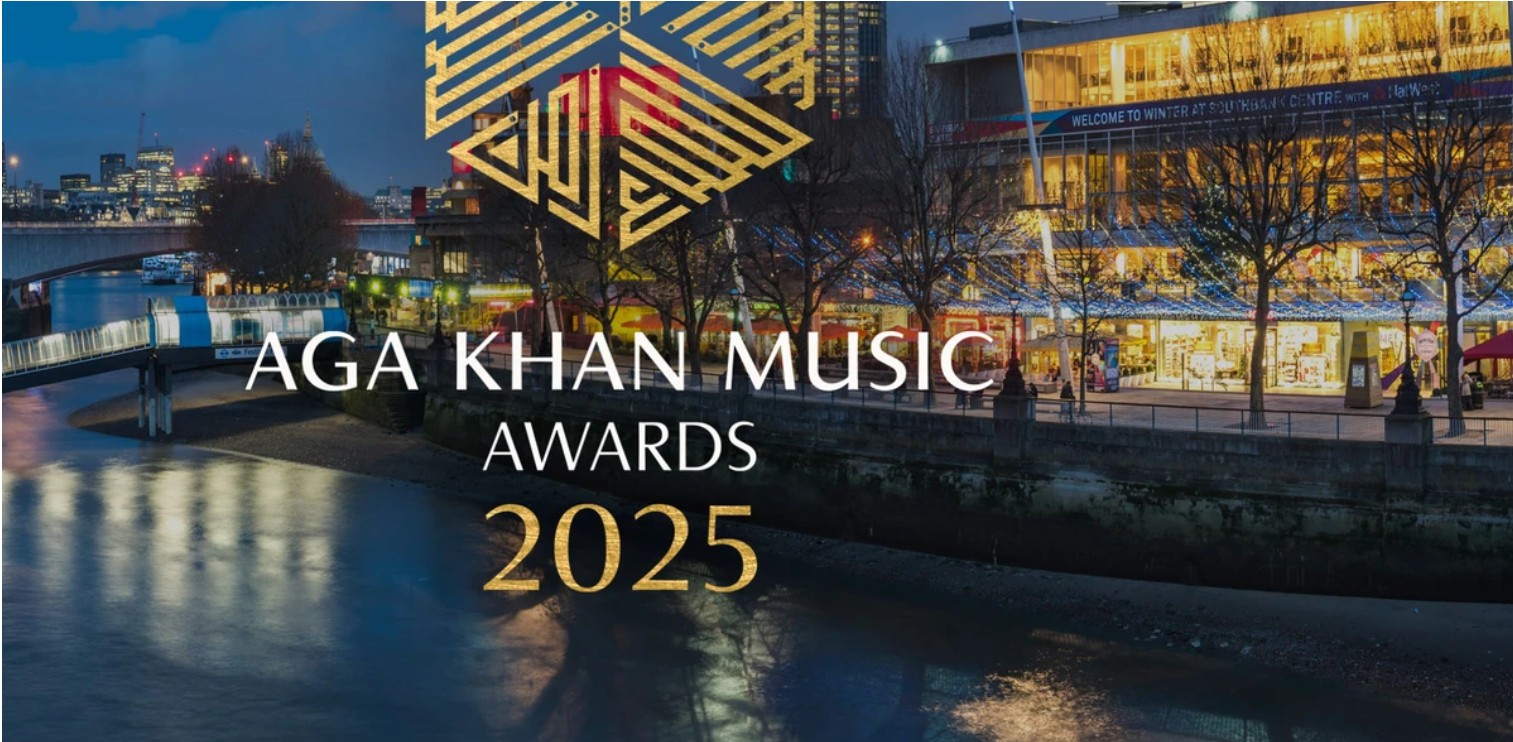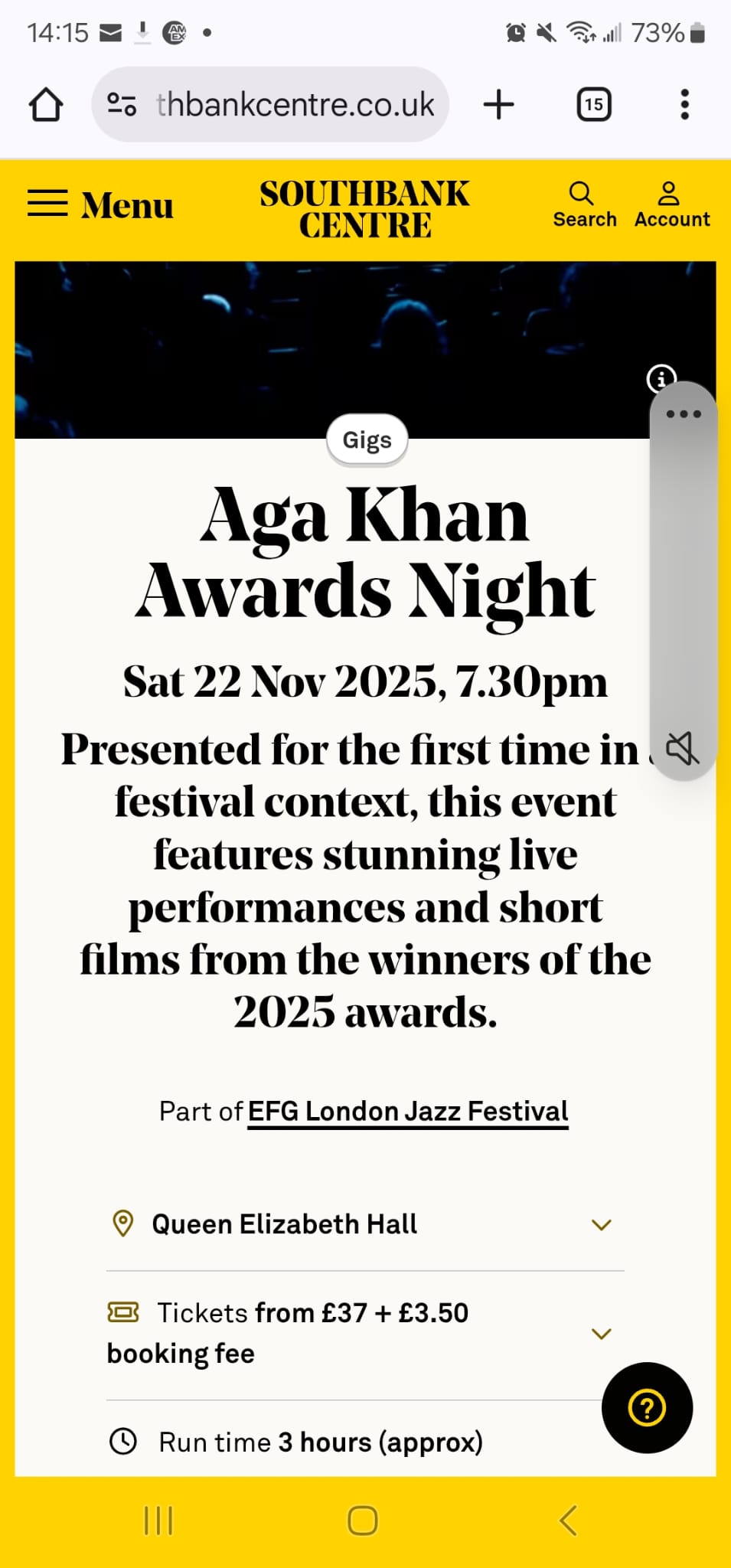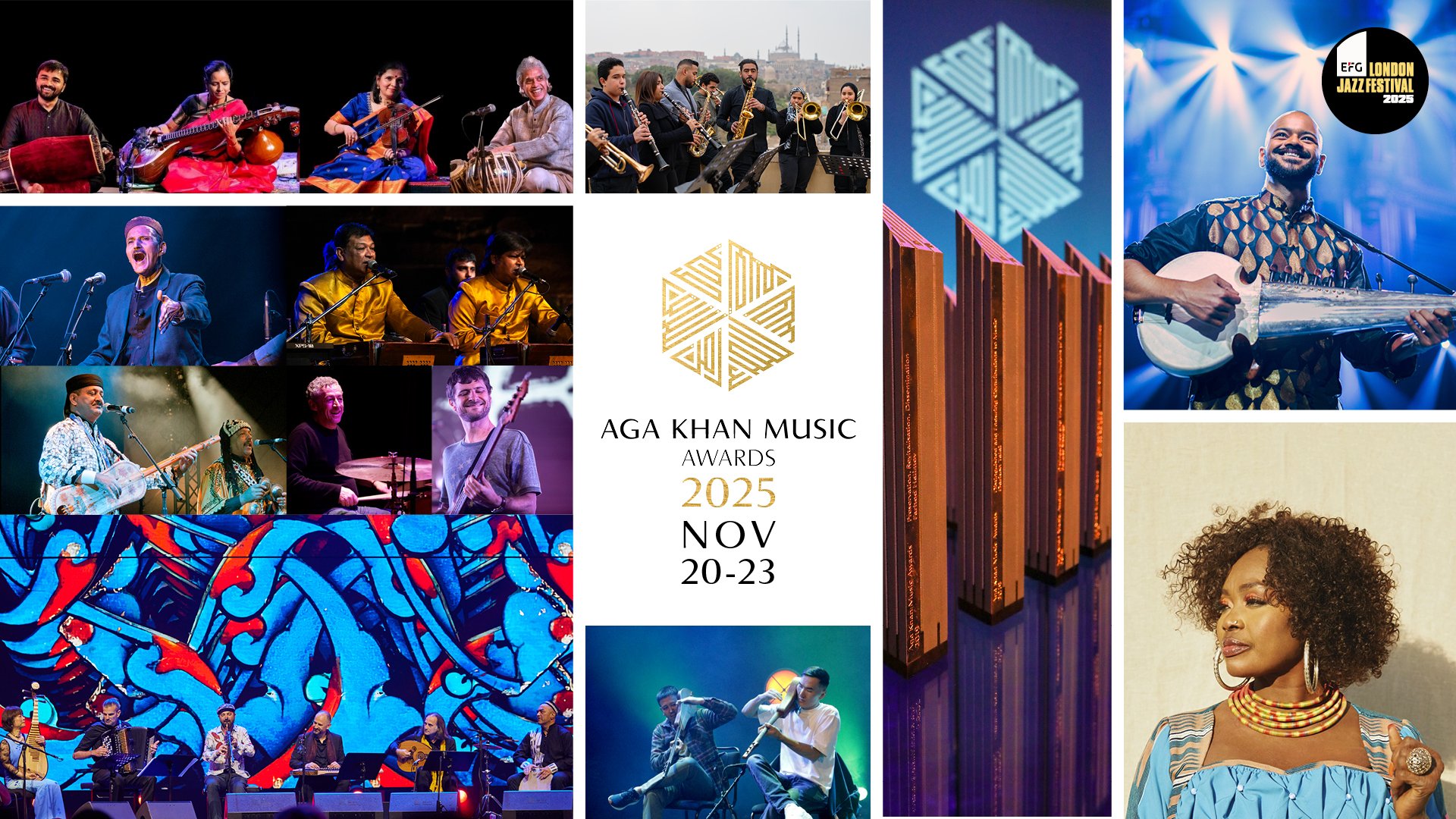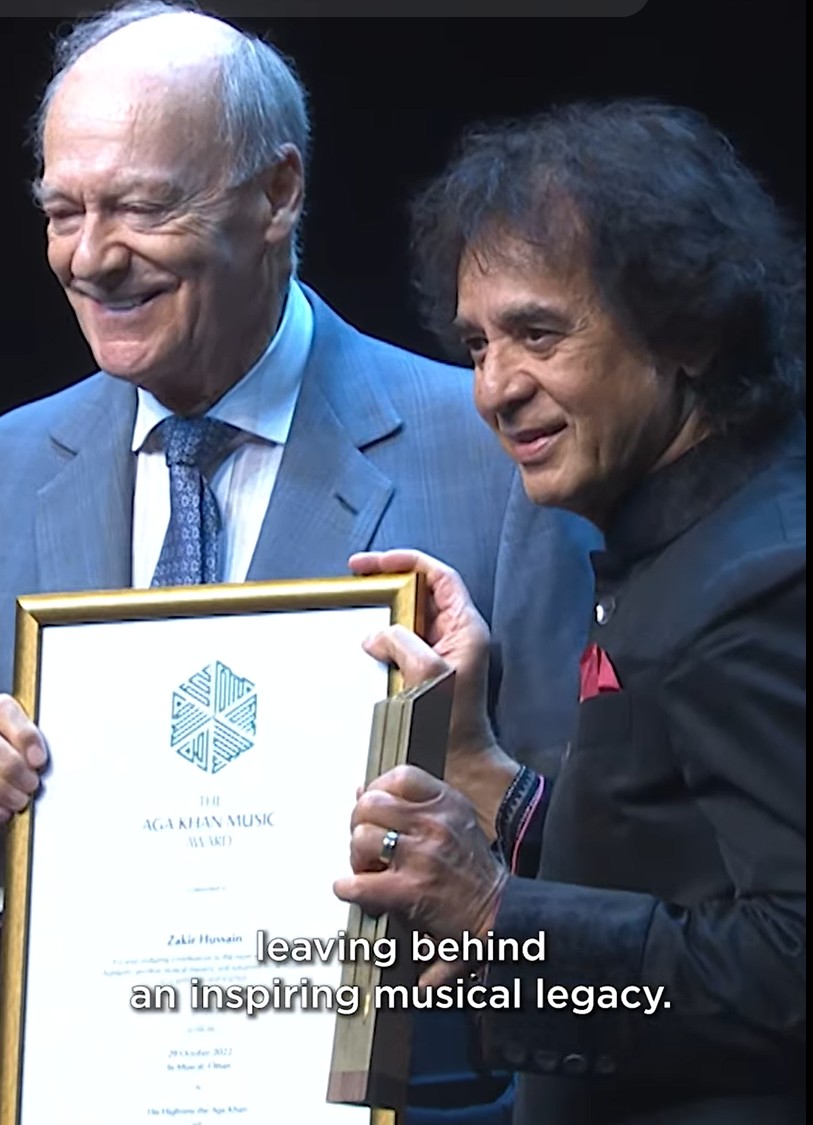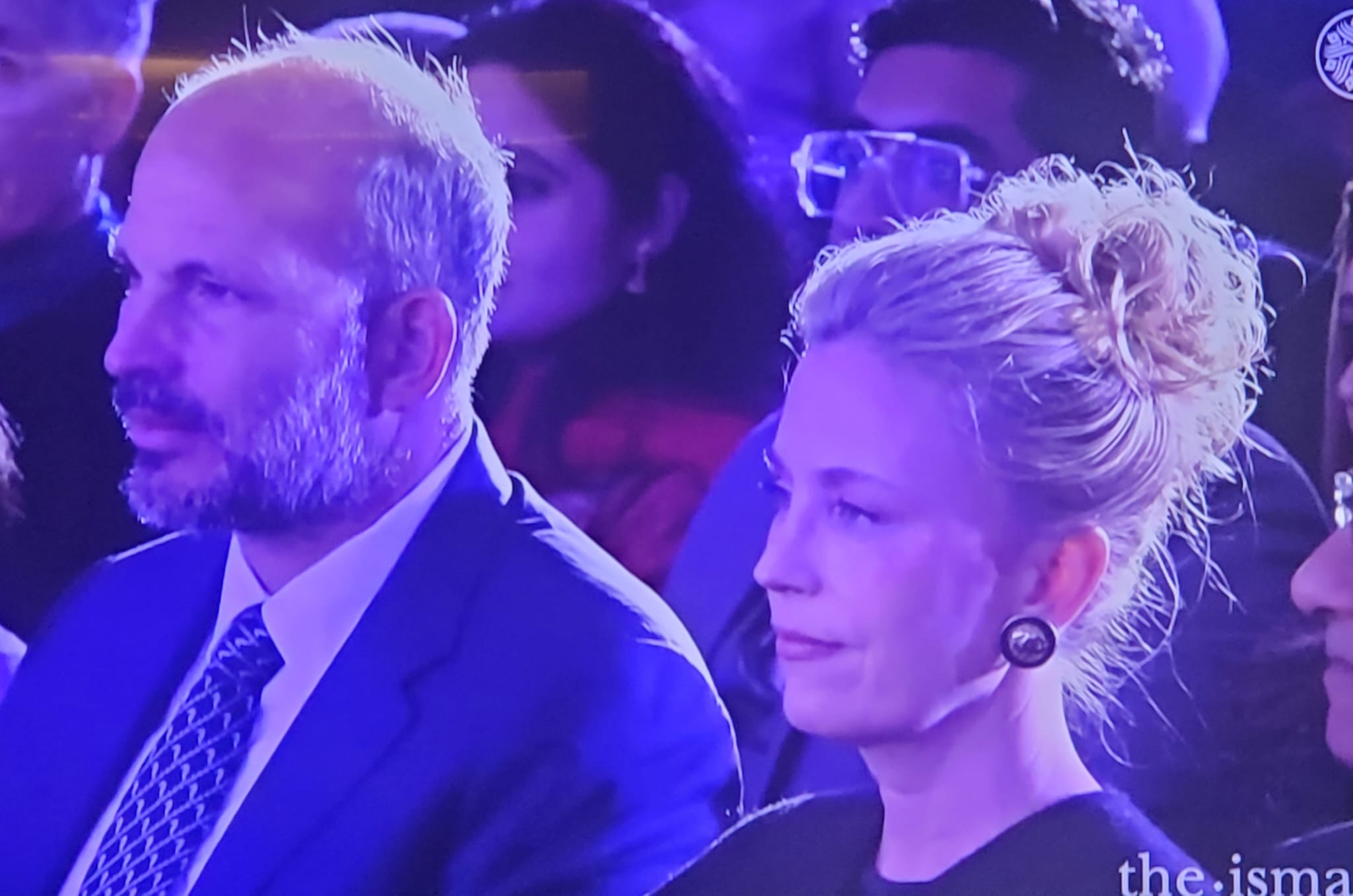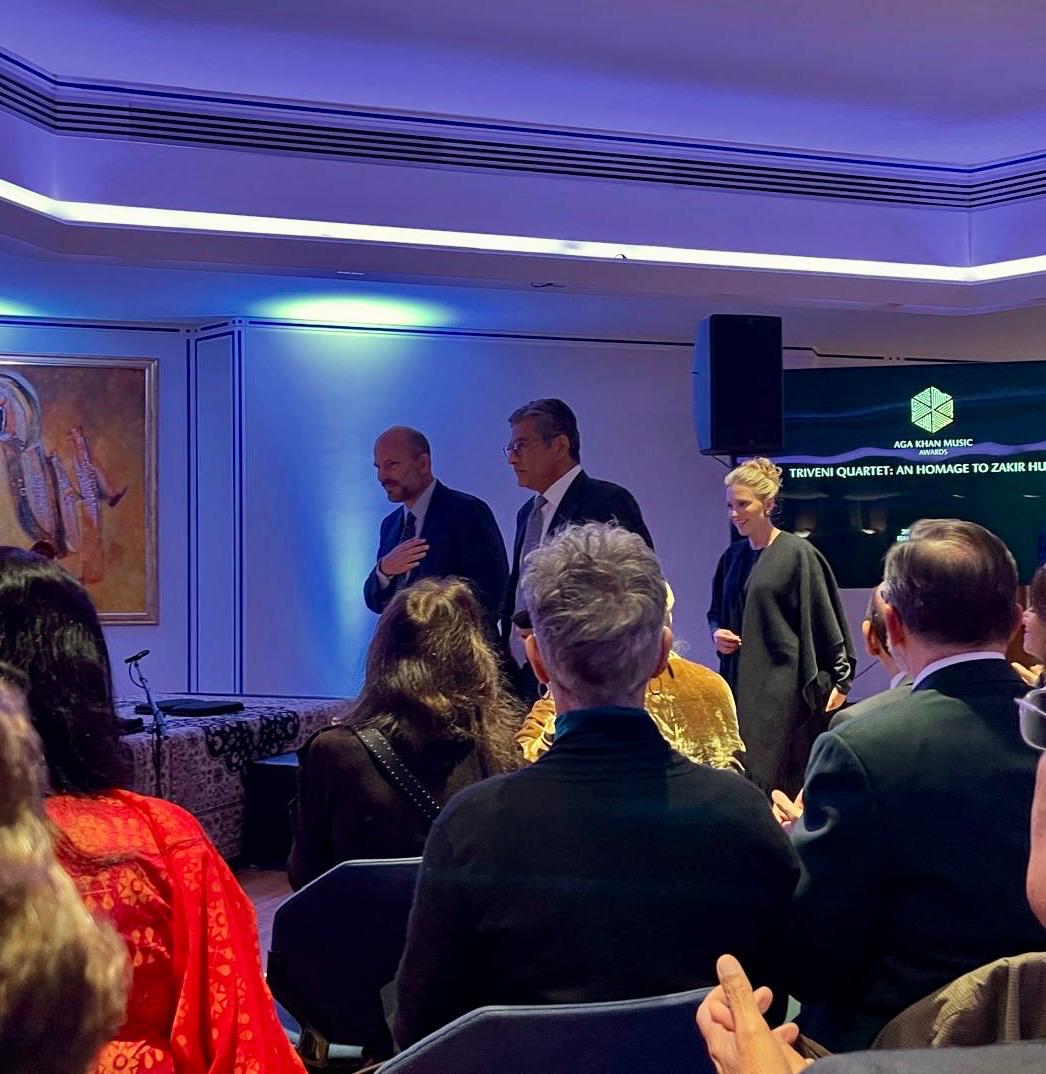https://www.newarab.com/features/aga-kh ... -treasures
Armani Syed
25 July, 2025
From museum glass to global stages, Aga Khan Master Musicians bring ancient musical treasures back to life
It’s a sweltering Spring afternoon in Paris, and the Aga Khan Master Musicians are hard at work in the darkened basement theatre at Musée du quai Branly - Jacques Chirac, the city’s indigenous art museum.
Oud strings melted into saxophone improvisations as the orchestra rehearsed for its concert, a duo of sold-out performances that took place over a weekend in April.
The show is also anticipated at the Edinburgh International Festival on August 22.
It has only been a month since their namesake and patron, Prince Karim al-Husseini, the Aga Khan IV, passed away at the age of 88. Save for big yachts and racehorses, the billionaire and hereditary spiritual leader of the Ismaili Shia Muslims, with a following of 12 to 15 million, was most synonymous with philanthropy.
As it stands, the Aga Khan Development Network, founded in 1967, invests approximately $1 billion annually in economic, social, and cultural development in over 30 countries, predominantly in Africa, Asia, and the Middle East.
The quietest among these causes is the Aga Khan Music Programme (AKMP), a cultural preservation initiative launched in 2000 by the Aga Khan IV and his brother, Prince Amyn Muhammad.
Initially, the programme identified leading musicians in Central Asia to promote the prestige of the art form on the global stage and train young apprentices in the traditional instruments of their nation. With its expansion into the Middle East, South Asia, West and North Africa, the programme has delivered music education to at least 30,000 students.
Now, as the Ismaili leadership marks a new era with Rahim al-Hussaini, the Aga Khan V, Fairouz Nishanova, the director of AKMP, reflects on the legacy of her late boss.
“It’s been very hard because he was not only my leader and the founder of the programme, but he was also a close mentor,” Fairouz tells The New Arab, as we go in search of a sun-soaked bench.
Aga_Khan_Master_Musicians
The Aga Khan Master Musicians are a collective of musicians brought together by the Aga Khan Music Programme
Rediscovering lost musical legacies
To exit the theatre, visitors must walk the dimly lit spiral staircase around a six-level glass cabinet encasing 10,000 dormant musical instruments. The tower brings together four instrument families — Aerophone, Chordophone, Membranophone, and Idiophone — from Africa, Asia, the Americas, and Oceania. Some of these fragile instruments are centuries old and likely haven’t been played in decades.
Fairouz, a daughter of diplomats, was invited to create the programme 25 years ago; the late Aga Khan overheard her lamenting the inefficiencies of bureaucratic processes at an event and was moved to action.
She observed the Aga Khan as a man ahead of his time: “There are very few Muslim leaders worldwide that would openly say, ‘I support music and musical creation. I will fund it to the [point] where others recognise its necessity,’” she says.
In its infancy, AKMP was disregarded by some critics as anti-Islamic or backwards, Fairouz recalls. Not everyone understood why they would travel to Tajikistan or Kyrgyzstan to revive the art of shamanic music making when it was widely considered a dark art.
“This is where the epic stories that hold the history of the nation are stored, and reviving them created a new national identity for a whole generation,” Fairouz says.
There are several Master Musicians in the orchestra’s rotation, and audiences can expect any combination of them in a performance.
For the Paris line-up, a diverse quintet: Chinese virtuoso pipa player Wu Man; Syrian-Swiss saxophonist Basel Rajoub; Syrian qanun master Feras Charestan; Uzbek Abbos Kosimov, a virtuoso on the doira frame drum, and Turkish oud master Yurdal Tokcan.
Aga_Khan_Master_Musicians
Syrian-Swiss saxophonist Basel Rajoub
In Paris, they are ironing out a performance with guest French musicians they have playfully dubbed the two Vincents — Vincent Peirani, accordionist and vocalist, and Vincent Segal, cellist and bassist.
“Each of us has different niche districts, civilisations, musical heritages we are representing. But when we come together, it's really easy for us to speak in musical language. This is the language of our hearts, our souls,” Syrian-Swiss saxophonist Basel says at the end of a tiresome rehearsal.
Yurdal joins him; the pair are somewhat of a package deal. “When we are together, we feel so happy because we are like missing parts,” Yurdal says, noting that as Turkish and Syrian men, they have become more than just geographical neighbours.
Yurdal_Tokcan
Turkish oud master Yurdal Tokcan
Culture played, not forgotten
Several Middle Eastern countries proudly claim the oud, a short-necked instrument that is the ancestor of the lute, typically featuring 11 or 13 strings.
But for over 40 years, Yurdal has been playing the oud “Turkish style.” That is, with brighter, sharper tones that allow centuries of feeling and storytelling to shine through.
Graduating from a Turkish conservatory, Yurdal performed in an ensemble affiliated with the then-Turkish Minister of Culture. He spent eight years as the artistic director of the group, drawing from a vast repertoire of Turkish music that dates back to the 10th century.
“When you’d like to understand societies, you should analyse the music,” Yurdal says of the power of music.
Meanwhile, Basel began playing the trumpet at the age of 15. Born in Aleppo, he graduated from Damascus Conservatory before switching to saxophone in his mid-20s.
“I was not such a fun player,” he jokes about his ex-instrument. Naturally, the conversation turns to jazz, but Basel says he doesn’t play the genre most synonymous with his instrument.
“I didn't want to play any music that was not mine,” he tells The New Arab.
He says he cannot wholly lean into Syrian music because its traditional sounds are not concerned with the saxophone, but he tries to bring aspects of his culture to performances.
The AKMP is well placed to ensure that a nation’s musical heritage outlasts any one government that seeks to suppress it.
Basel left Syria in 2008 before the outbreak of civil war in 2011, and — like many musicians — he has not returned since. But with the fall of Bashar al-Assad’s regime at the end of 2024, this new but uncertain chapter in the nation’s history offers Basel some hope of returning and performing with the Master Musicians in Damascus.
Artists as fluent translators of their history
To world-renowned Chinese pipa master Wu, who has played with the Masters for over a decade, instruments are transcendent and connect humanity. The pipa descends from West and Central Asian origins, and later appeared in China during the Northern Wei dynasty (386–534).
“Musical instruments are moving around. There's nothing that is from just one place, we all share,” Wu says.
She notes that the pipa has its origins in palace bands, but later evolved into a more folk-style instrument. During the Qing Dynasty (1644-1911), it evolved into a more solo instrument. Now, Wu plays both solo and in an orchestra. The pipa is her reminder that no instrument can be flattened into one timeless role.
Aga_Khan_Master_Musicians
Chinese virtuoso pipa player Wu Man
At the evening performance, the audience is abuzz over the attendance of some of the Noorani family, the Aga Khan’s relatives. But when the music starts, any distracted eyes return to the stage.
What we witness is a conversation in some shared language, one musician coaxing another into response. In both Tea House and Dance of the Yi, audiences hear each pluck of the pipa matching the heaving breaths of the accordion. The former piece is a jubilant melody, while the latter is pensive in tone. Rarely played together, each instrument morphs in the hand of its master, as urgent crescendos build and flutter away.
During Nowruz, a composition named after the Persian New Year, the Masters pause for Uzbek’s drums as he performs a sort of one-man show with two forms of percussion, flipping one in the air while beating the Doira.
If at any point, the audience felt left out of the conversation, Uzbek invites them back in by getting everyone to clap along. As they bring their hands together faster and faster, they summon all seven musicians to play again in a beautiful conclusion.
Together they demonstrate that ancient instruments, played to contemporary audiences, can resonate more deeply and farther than they can when displayed behind museum glass, collecting dust.
Each artist is not only a steward of their instrument, but a fluent translator of their history.
Armani Syed is a British journalist specialising in world affairs and global culture. She has previously reported from the London bureaus of TIME magazine and Business Insider. She writes at the intersection of major events and world news, including the impact of Qatar’s World Cup on migrant workers, protest action in Iran, and how climate change is affecting Hajj. She also covers art, cinema, and music from the global majority
Follow her on Instagram: @armani_sy
